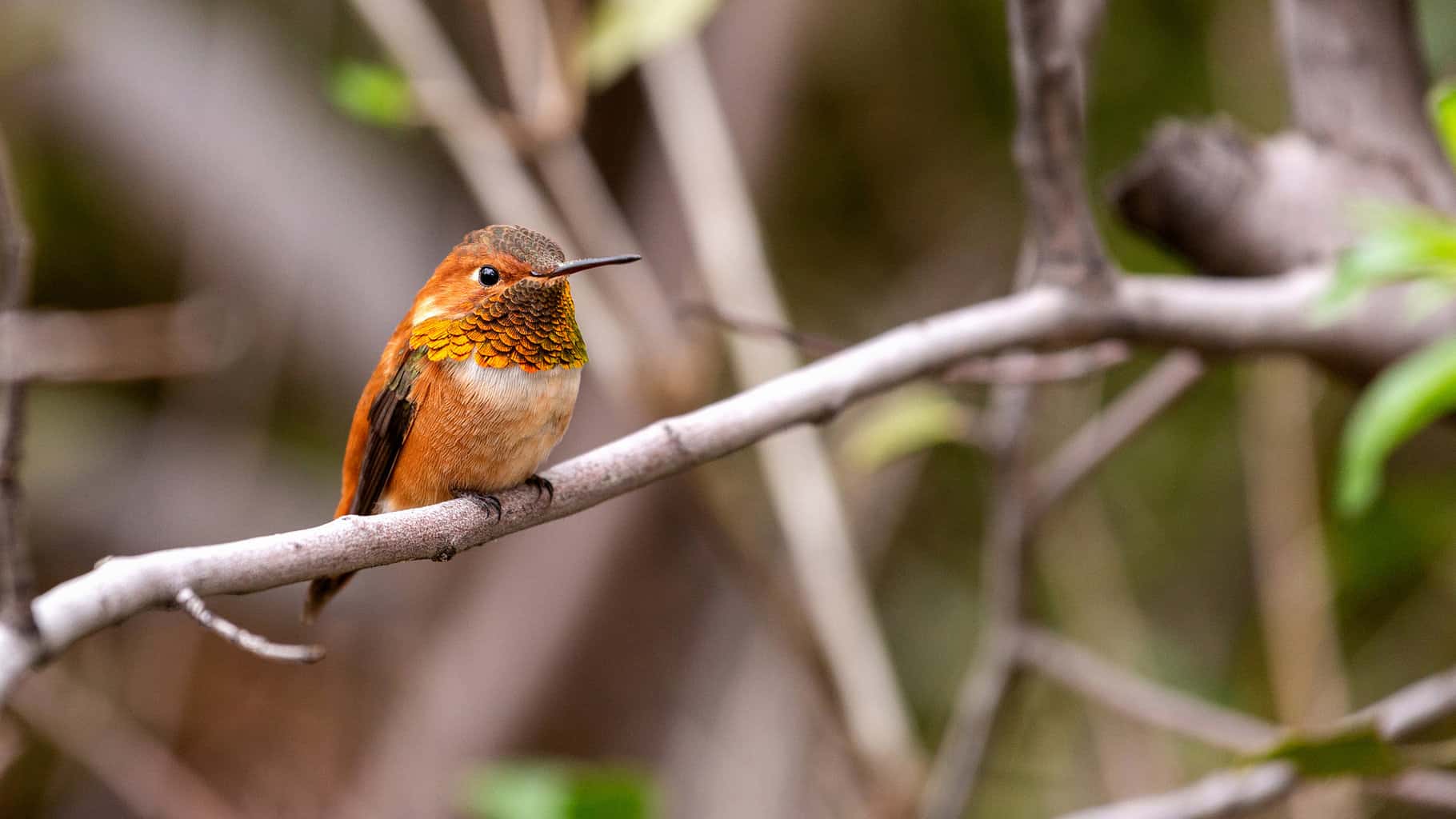Most people are far more likely to see a hummingbird before they hear one. This leads some people to think that hummingbirds must be silent—but that’s not true!
Hummingbirds do sing! That said, it doesn’t sound like the melodies of our beloved songbirds.
They make a variety of vocalizations, depending on the situation they are in. If you pay close attention and learn to recognize their sounds, soon you will be able to recognize these backyard noises as coming from visiting or nesting hummingbirds.
These energetic bird species vocalize to communicate. In this article, I’ll walk you through some of the typical sounds you may hear from hummingbirds and how to interpret them.
Do Hummingbirds Make Sounds?
First, let’s take a look at the wide range of sounds that hummingbirds make in their daily lives.
There are two different kinds of sounds that birds can make: Vocalization and non-vocalizations. Vocalizations are created from the voice box, but non-vocalizations are made by other parts of the body, such as the wings and feathers.
A bird’s voicebox is called a syrinx. It is truly unique in the animal kingdom! Hummingbirds have one of the tiniest and most complex syrinxes of all birds. This anatomical wonder is what allows them to make vocalizations and series of calls.
What Do Hummingbirds Sound Like?
American hummers make sounds in several different scenarios. The sound of a female hummingbird who is defending her nest is going to be different than the sound of a male who is trying to attract a mate.
There are a few main reasons why hummingbirds make sounds—both vocalizations and non-vocalizations.
Hummingbird Tail Chirps
Did you know hummingbirds use their tails to make sounds? They create chirping sounds by using precise movements of their feathers in the wind–including wind they create for themselves while divebombing and flying.
The male hummingbird chirps their tail feathers when they are trying to attract potential mates.
Hummingbird Singing & Calling
Singing and calling are used by hummingbirds to greet one another, especially in the morning. This “chip-chip-chip” sound is most likely to be heard at dawn by these champion singers.
Hummingbirds may also use whistles, chirps, and twitters to communicate.
Hummingbird “Humming”
I can’t talk about hummingbird sounds without talking about the sound that gives them their name!
The “humming” in the word “hummingbird” comes from the sound their wings make as they fly through the air.
I don’t mean those loud chirps or bursts of sound, but rather, the sounds they make when they are simply flying from one place to another.
As they fly, hummingbirds rotate their wings up to 180 degrees, using their uniquely flexible shoulder joints. This sound accompanies the unique flying behavior that allows hummingbirds to fly backward or hover over a flower or feeder.
Which Hummingbirds Are the Best Singers?

Not all hummingbird species vocalize. And if they do, their vocalizations tend to be pretty minimal.
However, a few breeds of hummingbirds do sing quite a lot! The ever-present Anna’s Hummingbird is considered to be the best singer in North America.
Their song lasts for more than 10 seconds, which is uncommonly long for hummingbirds. It starts with buzzing, then whistling, then chirping, which may be repeated.
What Does It Mean When Hummingbirds Chirp at You?
Have you ever heard a hummingbird and thought, “Is that little hummingbird chirping AT me?”
Hummingbird species are smart little creatures, and they learn quickly. If they see you as a source of food, they may become insistent that you refill their feeders.
Chirping and clicking sounds can accompany these demands!
Learn To Listen for Hummingbirds in Your Yard or Garden
Birders who want to spot more species of hummingbirds can depend on more than just what they see. Listening to hummingbirds is a great way to locate them before you ever have a chance to see one!
Learning to listen to hummingbirds takes practice and experience. But it can be done!
First, learn about the hummingbirds in your area. You’re going to hear different hummingbirds in Arizona than you will in Michigan. If you know which hummingbirds live in your area, you can research which sounds you can expect to hear.
Next, listen to hummingbird sounds online. You can find plenty of videos on YouTube that will help you become familiar with their sounds.
Know what to listen for by listening online before listening in nature!
It is also a good idea to learn to differentiate hummingbird sounds from other noisemakers in your yard or garden.
For example, insects and other birds are likely to make some similar noises, and that can cause some confusion for inexperienced birders who are learning to listen to hummingbirds.
Don’t get discouraged if this is challenging at first! The more you practice, the better you will get at seeing and hearing the species of hummingbirds in your garden!

